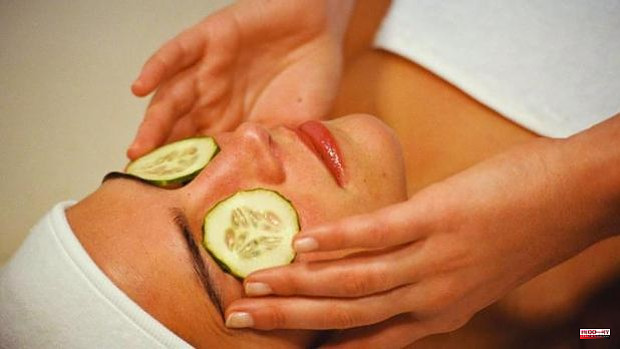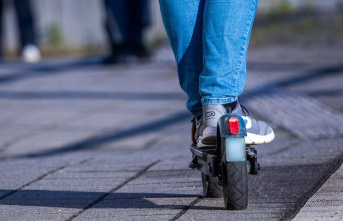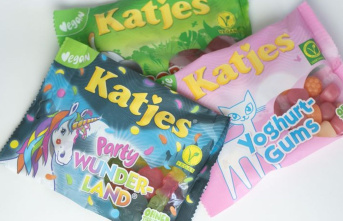Since back in the 1st century B.C. Cleopatra became the first "beauty addict" of natural cosmetics, with her eye kohl based on graphite powder, green malachite and a pinch of lead that boosted the immune system, her alabaster, salt and honey scrub or her donkey's milk baths with aloe vera, up to the recently launched line -with a sustainable vocation- of Kim Kardashian and its nine daily steps of "mandatory" compliance at the modest price of almost 700 dollars, the cosmetic industry has been evolving pushed by the demand of society. Today, the sector responds to the needs of the CSS consumer: aware, supportive and sustainable.
“Innovation is an inherent feature of the perfumery and cosmetics sector and its evolution. A third of the products launched have been reformulated and optimized in the last two years and 58.1% of the companies have created some line of 'Eco', 'Bio' or 'Organic' products. Similarly, two-thirds of companies already reduce waste from their products through eco-design and packaging reduction. And, for example, 97.6% of plastic microparticles have been reduced in products that are rinsed," says Val Díez, general director of Stanpa, the National Association of Perfumery and Cosmetics. She acknowledges that the sector is witnessing the birth of a new consumer who is concerned about health in an integral way, more attentive and careful with their own well-being and that of the planet: "By combining innovation and sustainability we can speak of an 'ecotechnological' consumer. Today, 46% raise their commitment to sustainability in line with an upward trend in local consumption: more than half (56%) opt more and more for Made in Spain products».
The first European macro-study on natural cosmetics carried out by Stanpa reveals that the environment is the main reason why 62% of natural cosmetics consumers choose this type of product. 46% prefer them for their simplicity, since they consider that they are formulated with fewer ingredients and in third place they point to transparency, since they take into account the ethical values of sustainable cosmetics brands.
The consumer witnesses the constant birth of new lines willing to hydrate and take care not only of their skin, but that of the planet. Not in vain, 5% of the polluting particles found in the oceans come from cosmetics and more than 120,000 million single-use containers come out of this sector today undergoing a sustainable facelift.
'Ecofriendly' cosmetics begin to slip fully into toiletry bags: solid shampoos, vegan creams, natural, ecological, cruelty-free, coral friendly sunscreens, 'zero waste' containers, refillable, recyclable... «In the current jungle of seals and claims in cosmetics it is easy to get lost, since there is no official definition of what is natural or ecological cosmetics, nor a regulation that applies to this field, the only thing that can guide the conscientious consumer is a certified seal on the label », says Nuria Alonso, responsible for the BioVidaSana Certification Standard for organic cosmetics, one of the few that exist in Spain. Make it clear that they do not enter into assessments about what is worse or better: «We focus on verifying that the products that are sold as natural or organic are so for the consumer's guarantee. Thus, they must meet the criteria of our certification: that they contain the majority of natural ingredients (preferably certified organic); that minimize the use of chemical ingredients (only those that are not a risk to health or the environment), that do not contain transgenics or nanoparticles, that have been produced without polluting or damaging the environment and, of course, that there have been no been tested on animals.
Alonso insists that “a stamp must mean something, and the consumer must know it or else it will be nothing more than a more or less showy adornment in the design of the label. Brands use terms that will be well received by consumers such as natural, bio, zero plastic... Sometimes these claims are based on something real, others are nothing more than optimistic interpretations of brands to be more attractive. For this reason, he insists that the most reliable thing is to "buy products with seals from a professional, registered and accredited certifier."
For Delia García, director of Sustainability and CSR of L'Oréal Spain and Portugal, "the future of beauty will be sustainable or it will not be. We have less than ten years to act on sustainability before it is too late and a transformation from the core of the business is necessary. That is why we have defined a roadmap with ambitious objectives to reduce greenhouse gas emissions, water consumption, that 100% of our packaging come from recycled or biologically based sources or that 95% of the ingredients are from renewable plant sources, abundant minerals or circular processes and that 100% of the formulas will be respectful of the aquatic environment", he points out. To this end, they have carried out a transformation of their I D through an approach based on Green Sciences (ecosciences) to offer consumers products that are increasingly more efficient, safe and respectful of the planet. To achieve the sustainable cultivation of ingredients and extract the best, they have laboratories with cutting-edge technological processes.
But this innovation and research has also been carried out by the natural cosmetics sector far from large centers. Pharmacist and cosmetologist specializing in medicinal plants, Ana Isabel de Andrés created Amapola Biocosmetics in 2004 in a rural area of Segovia, San Cristóbal. «I transformed an old barn belonging to my grandfather into a cosmetics laboratory and in 2016 it was moved to an energy-efficient building from where we manufacture more than eighty product references. What began as a self-employment adventure today employs twelve people », she points out and acknowledges that when it started almost nobody knew what natural cosmetics was « it was not a trend or anything ». Since its inception, it has worked with top-quality vegetable oils, plant extracts that they themselves macerate, collect or buy. And she specifies that “the skin is the largest absorption organ that we have in the body. What you put in it reaches the interior and can cause benefit or harm.
In the premises that Paia Botanicals has in the Madrid neighborhood of Las Letras, specialists in health, cosmetics and well-being give talks and discover the properties of cannabidol (CBD), which comes from the cannabis plant and is legal and non-psychoactive. The pharmacist Pablo Balhsen began to investigate its anti-inflammatory properties after his father - also a pharmacist and who had been predicted to live in a wheelchair due to a spinal cord injury - went to a small town in Hawaii, Paia, where he learned about the properties of CBD oil. Today his father still walks and only uses the cane when he is tired. "We have created a line of cosmetics with formulas that reduce inflammation, provide elasticity and limit cell division linked to old age", and acknowledges that the use of cannabidiol in natural cosmetics is increasingly popular among consumers.
While the world of cosmetics focuses on environmental protection, the case of Ashes to Life could be said to have been the other way around: an environmental disaster gave rise to a line of cosmetics. When Alejandro de Antonio saw how a raging fire was destroying a forest, he decided to find a solution that would help bring life back to those forests reduced to ashes. Together with a group of nature lovers and after a long period of documentation and study with specialists, they discovered that Babylonians, Egyptians, Greeks and Romans referred to the use of ash of vegetable origin for the creation of a "soap paste" that they used to clean their body and take care of their skin.
“We do not create an economy from a natural catastrophe,” Alejandro clarifies. To be able to access a forest after a fire, many requirements must be met and we are working on an action protocol and, until it is validated, we use ashes that come from coconut shells for soaps, favoring the circular economy. For the soap dishes, ash from pruning and controlled cleaning of sustainable forests is used to prevent fires. A percentage of sales is dedicated to projects to recover these forests and, in the future, when they can access, they plan to create special editions that benefit the burned area.
What is natural cosmetic? Natural cosmetics encompasses all those products that use raw materials of natural origin, that have undergone a simple transformation process, with the minimum intervention of additives or chemicals and that have used only those processes that are not harmful to the environment and health. of people.
What is ecological? It uses ingredients that, in addition to being natural, have been produced following the criteria for certified organic farming such as the non-use of fertilizers, pesticides, herbicides or chemicals.
And the ecobeauty score system? More than thirty companies in the sector make up the EcobeautyScore Consortium, which aims to develop a common system to assess the environmental footprint of cosmetic products and offer clear and transparent information. A prototype track and score is planned for the end of 2022.









